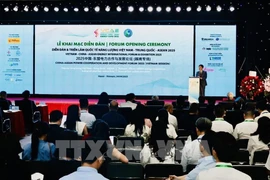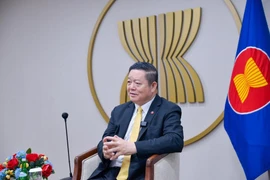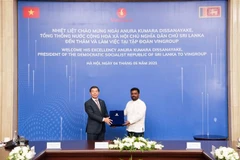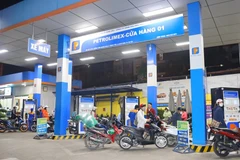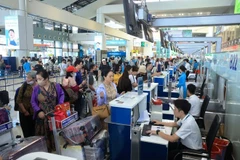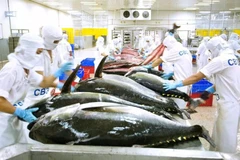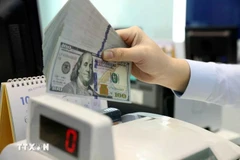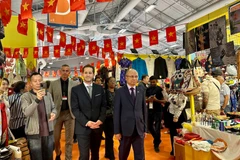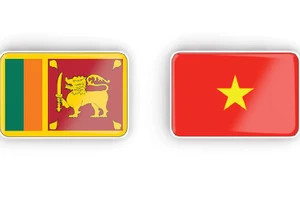Beijing (VNA) – Trade between the Association of Southeast Asian Nations (ASEAN) and China has grown strongly in recent years, leading to a rising demand for the use of the renminbi (RMB) in cross-border payments, according to the International Trade news website of China's Ministry of Commerce.
Monetary cooperation between the two sides has expanded significantly, including bilateral currency swaps and the development of cross-border QR payment systems, helping businesses and individuals make payments more quickly and conveniently.
Currently, about 100 banks in ASEAN countries have directly or indirectly joined the RMB Cross-border Interbank Payment System (CIPS). This system continues to improve, contributing to the growing role of the RMB in trade and investment across the region.
China is actively promoting cross-border payment network connectivity with ASEAN countries. In Cambodia, two-way QR code payments have been launched, allowing Chinese tourists to use e-wallets such as WeChat Pay and Alipay at sites like Angkor Wat, while Cambodian tourists can use Bakong wallets to scan QR codes for payments in China.
Similar models are being expanded to other Southeast Asian countries, including Malaysia and Vietnam. Recently, UnionPay International, NAPAS, and major banks from both China and Vietnam signed an agreement to promote QR payment connectivity between the two countries. In Malaysia, the People's Bank of China (PBoC) reported that the bilateral local currency transaction platform is steadily solidifying, with supporting policies continuing to improve.
According to the PBoC, in the first quarter of this year, the number of QR code transactions in Cambodia via Cloud QuickPass and UnionPay wallets more than doubled compared to the same period last year, reaching a record high.
Trade volume between China and ASEAN reached 6.99 trillion RMB (about 959 billion USD) in 2024, up 9% year-on-year and accounting for 15.9% of China's total foreign trade. Meanwhile, the volume of RMB payments between the two sides rose by 35%, representing 28% of total bilateral trade.
Data from the Society for Worldwide Interbank Financial Telecommunication (SWIFT) showed that the RMB was the world’s third-largest trade payment currency in 2024, accounting for 5.8% of transactions. In the first quarter of 2025, the value of RMB transactions between China and Malaysia reached 102 billion RMB (4 billion USD), up 27% year-on-year, while transactions with Cambodia reached 5 billion RMB (686 million USD), an increase of 45% compared to the same period in 2024./.
